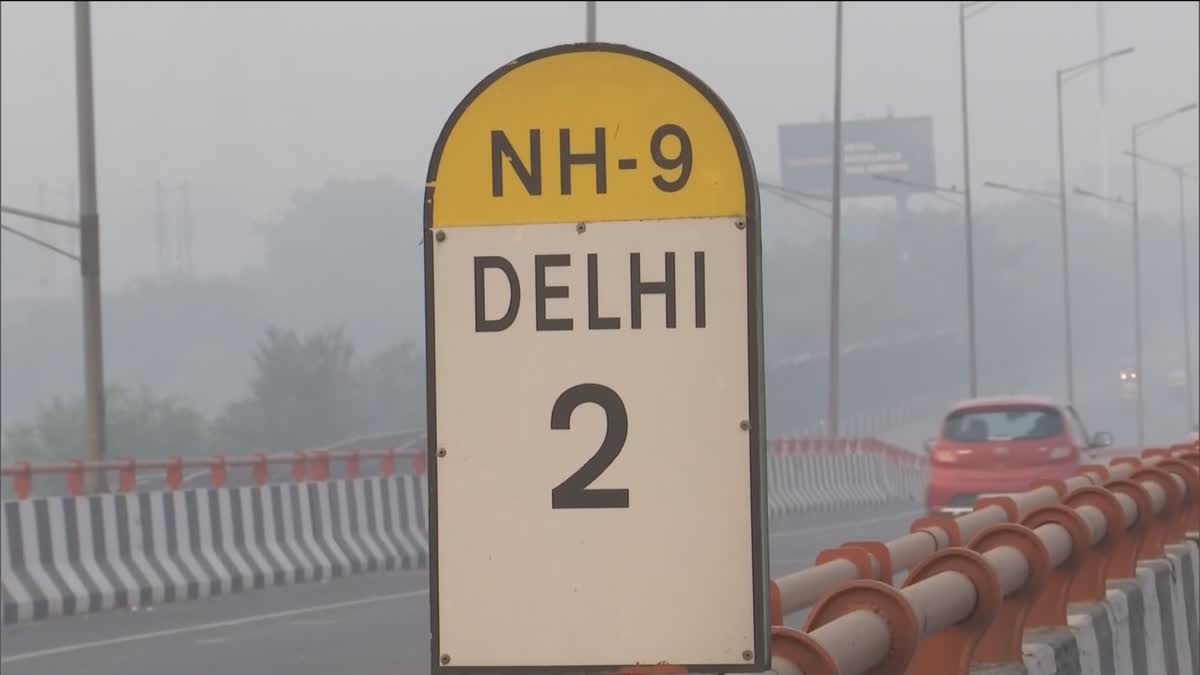New Delhi: In 12 of 40 air monitoring stations maintained by Central Pollution Control Board in Delhi, the Air Quality Index (AQI) remained over 450 which is categorised as "severe plus".
At 7 am, Wazirpur in Delhi remained the worst hit and it recorded an AQI of 482, followed by Rohini and Bawana stations both recording 478.
Jahangirpuri's AQI stood at 475 while that of Patparganj, Mundka, RK Puram, Sonia Vihar, Dwarka Sector 8, and Narela recorded 469, 468, 466, 464, 462, 461, and 460.
North Campus monitoring station in Delhi University recorded 455.
The Commission for Air Quality Management (CAQM) for the national capital and adjoining areas has already imposed the stringent curbs mandated under the final Stage IV of its air pollution control plan called the Graded Response Action Plan (GRAP) after the 24-hour average AQI, recorded at 4 pm every day, worsened from 415 on Saturday to 454 on Sunday.
GRAP categorisation of the air quality in four different stages are as follows: Stage I - 'Poor' (AQI 201-300); Stage II - 'Very Poor' (AQI 301-400); Stage III - 'Severe' (AQI 401-450); and Stage IV - 'Severe Plus' (AQI >450).
Those who ventured out on Monday morning were greeted by a toxic haze which has enveloped Delhi-NCR for the seventh consecutive day. While it obscured landmarks from view, it affects and causes significant problems for people with existing respiratory issues.
According to the forecast issued by the Indian Institute of Tropical Meteorology, the predominant surface wind coming from Northwest directions in Delhi with wind speed 04-06 kmph, will result in having mostly a clear sky and a shallow to moderate fog in the morning. The IITM predicts the condition will improve by Tuesday in the City which may witness a shallow fog, with a similar forecast for Wednesday.
Reasons for pollution- Weather experts attribute unfavourable meteorological conditions combined with vehicular emissions, paddy straw burning, firecrackers and other local pollution as factors contributing to hazardous air quality levels in Delhi-NCR during the winter every year.
A Delhi Pollution Control Committee (DPCC) data show the national capital faces peak pollution from November 1 to November 15 when the number of stubble burning incidents in Punjab and Haryana increases.
A total of 4,160 farm fires were reported from north India on Sunday -- the highest so far this season, PTI reported citing the Indian Agricultural Research Institute (IARI)
According to Punjab Remote Sensing Centre data, Punjab reported 3,230 incidents of stubble burning on Sunday and it is the state's highest in a day so far this season.
Restriction in Delhi- As per the mandate under stage IV of GRAP, only CNG, electric and BS VI-compliant vehicles from other states are allowed to enter Delhi, with exemptions to those involved in essential services. Also, all medium and heavy goods vehicles not engaged in essential services are barred from entering the capital. The guidelines to this effect was issued by the CAQM order, after the 24-hour daily average data was made available after 4 pm on Sunday.
The Delhi government's Transport Department in a separate order banned the entry of trucks, except those carrying essential items, into the national capital.
"As per directions provided under Stage IV of the revised GRAP and under Section 115 of the Motor Vehicles Act, 1988, it is hereby ordered... No Entry for Truck traffic into Delhi (Except for Trucks carrying essential commodities/providing essential services and all LNG/CNG/ Electric Trucks)," the orders read.
It also banned the entry of light commercial vehicles registered outside Delhi, other than electric vehicles, CNG and BS VI-compliant vehicles, except those carrying essential commodities.
"Ban on plying of Delhi-registered diesel operated Medium Goods Vehicles (MGVs) and Heavy Goods Vehicles (HGV) in Delhi, except those carrying essential commodities/providing essential services. This direction shall not be applicable on vehicles carrying essential commodities i.e. raw vegetables, fruits, grains, milk, eggs or ice that is to be used as food items, and tankers carrying petroleum products," the orders read.
Read More
- Delhi's air quality dips to 'severe plus' again, strictest curbs under pollution control plan kick in
- Delhi air quality: No entry for old diesel buses from today; electric, CNG, BS-VI buses allowed; all you need to know
- Delhi air quality GRAP Stage III: Non-essential constructions banned in NCR from today ; all you need to know



